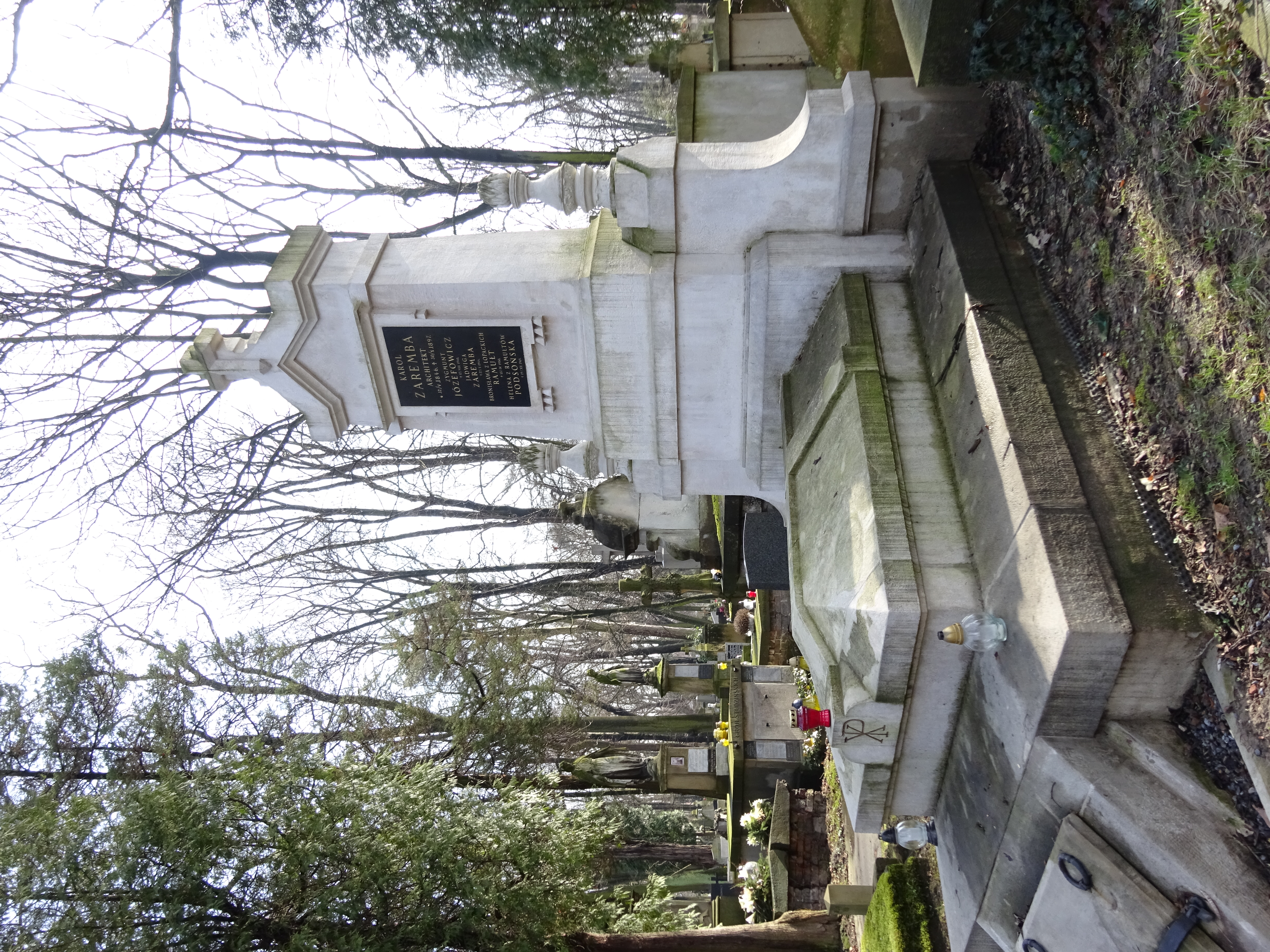Karol Zaremba on:
[Wikipedia]
[Google]
[Amazon]
 Karol Zaremba (12 May 1846 – 30 October 1897) – was a Polish architect.
He studied at the Cracow Institute of Technology. After the
Karol Zaremba (12 May 1846 – 30 October 1897) – was a Polish architect.
He studied at the Cracow Institute of Technology. After the  He wrote articles for the "Technical Magazine", among others about preserving architectural monuments in our country and about the goals and tasks of the future congress of Polish technicians (1881). In the years 1883 – 1889, the Kraków and Lviv Technical Societies had a joint "Technical Magazine", in which Tadeusz Stryjeński, Tomasz Pryliński and Wincenty Wdowiszewski published their articles. He designed the
He wrote articles for the "Technical Magazine", among others about preserving architectural monuments in our country and about the goals and tasks of the future congress of Polish technicians (1881). In the years 1883 – 1889, the Kraków and Lviv Technical Societies had a joint "Technical Magazine", in which Tadeusz Stryjeński, Tomasz Pryliński and Wincenty Wdowiszewski published their articles. He designed the
http://bcpw.bg.pw.edu.pl/Content/2364/34pt1908_nr_33.pdf
{{DEFAULTSORT:Zaremba, Karol January Uprising participants Architects from Kraków Burials at Rakowicki Cemetery
 Karol Zaremba (12 May 1846 – 30 October 1897) – was a Polish architect.
He studied at the Cracow Institute of Technology. After the
Karol Zaremba (12 May 1846 – 30 October 1897) – was a Polish architect.
He studied at the Cracow Institute of Technology. After the January uprising
The January Uprising ( pl, powstanie styczniowe; lt, 1863 metų sukilimas; ua, Січневе повстання; russian: Польское восстание; ) was an insurrection principally in Russia's Kingdom of Poland that was aimed at ...
in which he took part, he continued his education in Berlin
Berlin ( , ) is the capital and largest city of Germany by both area and population. Its 3.7 million inhabitants make it the European Union's most populous city, according to population within city limits. One of Germany's sixteen constitue ...
and traveled to Italy. From 1875 he settled permanently in Cracow. He was a member of the Kraków Technical Society, city councilman, along with Stanisław Domański. He dealt with the matter of waterworks in Cracow. He designed public buildings, promoted Berlin architecture in the spirit of late historicism. His implementation includes:
*The building of the Charity Society together with the chapel from 1881–1883 at street Koletek
*Educational institution for girls along with the church and Monastery of the Sisters of Our Lady of Mercy in Łagiewniki from 1889–1891
*Surgical Hospital – II Department of Surgery, Jagiellonian University
The Jagiellonian University (Polish: ''Uniwersytet Jagielloński'', UJ) is a public research university in Kraków, Poland. Founded in 1364 by King Casimir III the Great, it is the oldest university in Poland and the 13th oldest university in ...
, so-called "Red Surgery" at Kopernika 21 street (1892–1893)
*Tenements at Basztowa 18 (1877), Sławkowska 32 (1883), Westerplatte 4 and 5 (1889–1894) Garncarska 14, own house at ulica Garncarska 16 (1894–1898)
*Rebuilt the chapels at the Bishop's Palace in 1886
 He wrote articles for the "Technical Magazine", among others about preserving architectural monuments in our country and about the goals and tasks of the future congress of Polish technicians (1881). In the years 1883 – 1889, the Kraków and Lviv Technical Societies had a joint "Technical Magazine", in which Tadeusz Stryjeński, Tomasz Pryliński and Wincenty Wdowiszewski published their articles. He designed the
He wrote articles for the "Technical Magazine", among others about preserving architectural monuments in our country and about the goals and tasks of the future congress of Polish technicians (1881). In the years 1883 – 1889, the Kraków and Lviv Technical Societies had a joint "Technical Magazine", in which Tadeusz Stryjeński, Tomasz Pryliński and Wincenty Wdowiszewski published their articles. He designed the Jordan Park
Jordan Park (''Park Jordana'', literally Jordan's Park) was established in 1889 as the first public playground in Kraków, Poland, and the first of its kind in Europe. It was equipped with exercise fixtures modeled after those of similar playgroun ...
in 1887, occasional decorations, for example, the visit of Emperor Franz Joseph I
Franz Joseph I or Francis Joseph I (german: Franz Joseph Karl, hu, Ferenc József Károly, 18 August 1830 – 21 November 1916) was Emperor of Austria, King of Hungary, and the other states of the Habsburg monarchy from 2 December 1848 until his ...
in 1880 in Cracow and the funeral of Adam Mickiewicz in 1890. He was buried at the main alley of the Rakowicki Cemetery
Rakowicki Cemetery (English: ; pl, Cmentarz Rakowicki) is a historic necropolis and a cultural heritage monument located on 26 Rakowicka Street in the centre of Kraków, Poland. It lies within the Administrative District No. 1 ''Stare Miasto'' ...
.
References
General references
* ''Encyklopedia Krakowa'', wyd. PWN, Warszawa-Kraków 2000. * Stanisław Łoza, ''Architekci i budowniczowie w Polsce'', Warszawa 1954.http://bcpw.bg.pw.edu.pl/Content/2364/34pt1908_nr_33.pdf
{{DEFAULTSORT:Zaremba, Karol January Uprising participants Architects from Kraków Burials at Rakowicki Cemetery